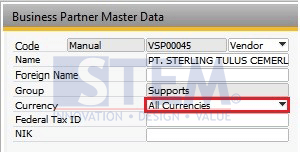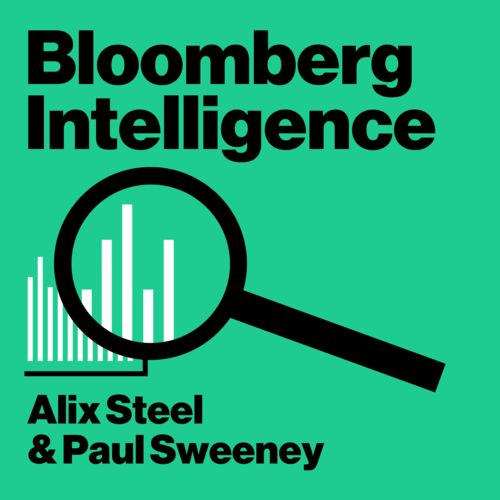
You may have wondered what stock futures are if you ever considered investing in the stock exchange. In layman's terms, stock futures are a standardized contract to purchase or sell an asset at a fixed price and at a specific date in the near future. Contracts are not known to each other and the asset being traded is usually a financial instrument, or commodity. This article will discuss the basics and use of futures contracts to trade stocks.
Stock futures trading
While there are several benefits to trading in stock futures, these investments carry a higher degree of risk. You may end up losing more than you initially invested, or even more than you originally put in. This investment has a risk to your financial security. You should deposit margin with a broker. Your initial margin is known as the "initial margin." You must have a certain amount of maintenance margin on hand at all times, or the broker will be forced to close your trade.
Another advantage to trading in stock futures is that these markets are highly liquid. You can easily trade these instruments, which allows you to increase your leverage. A stock brokerage may offer you only a 2:1 leverage, whereas a futures trader can obtain 20 times the leverage. The potential for higher profits comes with increased risk. However, the benefits of futures trading far outweigh any potential risks. Before you start trading in this form of futures, be sure to know the risks.

Trading in single-stock futures
A single stock future (SSF), is a type futures contract where the buyer agrees that he will pay a specific price for 100 shares of stock at a given date. Like any other contract, an SSF buyer doesn't receive voting rights and dividends. A single stock-future does however give the right of buying or selling a stock. A single-stock contract is between two investors. It allows the buyer to buy the stock at a future date. The seller must deliver the shares by that date.
Trading in single-stock futures contracts is a risky investment. Traders should exercise extreme caution. This type of trading is risky and requires a large amount of capital. If you lose more than you expect, it can be very costly. For traders who wish to diversify their portfolio, single stock futures can be used to leverage positions. Single-stock futures trading has some disadvantages that may be worth consideration if you have the time and resources to look at your investment options.
Futures trading in stock indexes
The only difference between trading stock index futures trading and trading openly is the manner in which the futures contract settlement is made. At the expiry date of the contract, the cash amount of the futures contract will be settled in cash. The cash amount represents the difference between index value and futures price. Therefore, in the case of a stock index futures contract, the investor earns $5,000 in profit. Traders may own a portfolio of securities.
The first stock index futures market was created in 1982 by the Kansas City Board of Trade's introduction of the Value Line Index futures contract. The Chicago Mercantile Exchange (CME) introduced the Standard & Poor 500 futures in 1982, followed by the Major Market Index in 1984. Stock index futures have gained popularity among traders and investors alike. However, you should remember that you should only trade in a diversified portfolio of stocks. There are many stock futures options.

Margin trades
For stock futures trading, you will need to have cash in your bank account to buy and sell the stock. Margin trading also known by "gearing," or "leveraging" - you must have sufficient cash to buy or sell the stock. This is because your open market position will be marked daily to the markets. If it falls below that amount, your position will have to be liquidated.
You must also consider the risks of trading stock futures on margin. Margin can be either your best friend, or your worst enemy. Begin with a simulator before you make your first trade. It's best to hold positions for no less than an hour before the market closes. While margin is not necessary in all trading activities, it is highly recommended that you have a proven strategy to protect your money in case of a loss.
FAQ
Are bonds tradeable?
They are, indeed! As shares, bonds can also be traded on exchanges. They have been for many, many years.
The only difference is that you can not buy a bond directly at an issuer. They can only be bought through a broker.
Because there are less intermediaries, buying bonds is easier. You will need to find someone to purchase your bond if you wish to sell it.
There are many different types of bonds. Some bonds pay interest at regular intervals and others do not.
Some pay interest quarterly while others pay an annual rate. These differences make it easy for bonds to be compared.
Bonds are a great way to invest money. You would get 0.75% interest annually if you invested PS10,000 in savings. The same amount could be invested in a 10-year government bonds to earn 12.5% interest each year.
If all of these investments were put into a portfolio, the total return would be greater if the bond investment was used.
How are share prices established?
Investors set the share price because they want to earn a return on their investment. They want to make a profit from the company. They buy shares at a fixed price. Investors will earn more if the share prices rise. If the share price falls, then the investor loses money.
An investor's main objective is to make as many dollars as possible. This is why they invest. This allows them to make a lot of money.
What is a Stock Exchange and How Does It Work?
Companies can sell shares on a stock exchange. Investors can buy shares of the company through this stock exchange. The market sets the price for a share. It usually depends on the amount of money people are willing and able to pay for the company.
Companies can also raise capital from investors through the stock exchange. Companies can get money from investors to grow. They do this by buying shares in the company. Companies use their money in order to finance their projects and grow their business.
Many types of shares can be listed on a stock exchange. Some shares are known as ordinary shares. These are the most popular type of shares. These shares can be bought and sold on the open market. Prices of shares are determined based on supply and demande.
Preferred shares and debt securities are other types of shares. When dividends are paid out, preferred shares have priority above other shares. A company issue bonds called debt securities, which must be repaid.
Statistics
- "If all of your money's in one stock, you could potentially lose 50% of it overnight," Moore says. (nerdwallet.com)
- Our focus on Main Street investors reflects the fact that American households own $38 trillion worth of equities, more than 59 percent of the U.S. equity market either directly or indirectly through mutual funds, retirement accounts, and other investments. (sec.gov)
- The S&P 500 has grown about 10.5% per year since its establishment in the 1920s. (investopedia.com)
- Ratchet down that 10% if you don't yet have a healthy emergency fund and 10% to 15% of your income funneled into a retirement savings account. (nerdwallet.com)
External Links
How To
How to open a trading account
First, open a brokerage account. There are many brokers available, each offering different services. Some brokers charge fees while some do not. Etrade, TD Ameritrade and Schwab are the most popular brokerages. Scottrade, Interactive Brokers, and Fidelity are also very popular.
Once you have opened your account, it is time to decide what type of account you want. You can choose from these options:
-
Individual Retirement Accounts, IRAs
-
Roth Individual Retirement Accounts
-
401(k)s
-
403(b)s
-
SIMPLE IRAs
-
SEP IRAs
-
SIMPLE 401(k)s
Each option offers different benefits. IRA accounts have tax advantages but require more paperwork than other options. Roth IRAs allow investors to deduct contributions from their taxable income but cannot be used as a source of funds for withdrawals. SIMPLE IRAs have SEP IRAs. However, they can also be funded by employer matching dollars. SIMPLE IRAs require very little effort to set up. They allow employees to contribute pre-tax dollars and receive matching contributions from employers.
Finally, you need to determine how much money you want to invest. This is also known as your first deposit. You will be offered a range of deposits, depending on how much you are willing to earn. For example, you may be offered $5,000-$10,000 depending on your desired rate of return. This range includes a conservative approach and a risky one.
After you've decided which type of account you want you will need to choose how much money to invest. Each broker will require you to invest minimum amounts. These minimum amounts vary from broker-to-broker, so be sure to verify with each broker.
After choosing the type account that suits your needs and the amount you are willing to invest, you can choose a broker. Before you choose a broker, consider the following:
-
Fees-Ensure that fees are transparent and reasonable. Many brokers will try to hide fees by offering free trades or rebates. However, some brokers charge more for your first trade. Be wary of any broker who tries to trick you into paying extra fees.
-
Customer service – You want customer service representatives who know their products well and can quickly answer your questions.
-
Security - Select a broker with multi-signature technology for two-factor authentication.
-
Mobile apps - Find out if your broker offers mobile apps to allow you to view your portfolio anywhere, anytime from your smartphone.
-
Social media presence - Find out if the broker has an active social media presence. If they don’t have one, it could be time to move.
-
Technology – Does the broker use cutting edge technology? Is the trading platform intuitive? Are there any problems with the trading platform?
Once you have selected a broker to work with, you need an account. Some brokers offer free trials while others require you to pay a fee. You will need to confirm your phone number, email address and password after signing up. Next, you'll need to confirm your email address, phone number, and password. You'll need to provide proof of identity to verify your identity.
Once verified, you'll start receiving emails form your brokerage firm. You should carefully read the emails as they contain important information regarding your account. The emails will tell you which assets you are allowed to buy or sell, the types and associated fees. Be sure to keep track any special promotions that your broker sends. These may include contests or referral bonuses.
Next is opening an online account. An online account can usually be opened through a third party website such as TradeStation, Interactive Brokers, or any other similar site. These websites are excellent resources for beginners. When opening an account, you'll typically need to provide your full name, address, phone number, email address, and other identifying information. After this information has been submitted, you will be given an activation number. Use this code to log onto your account and complete the process.
After opening an account, it's time to invest!